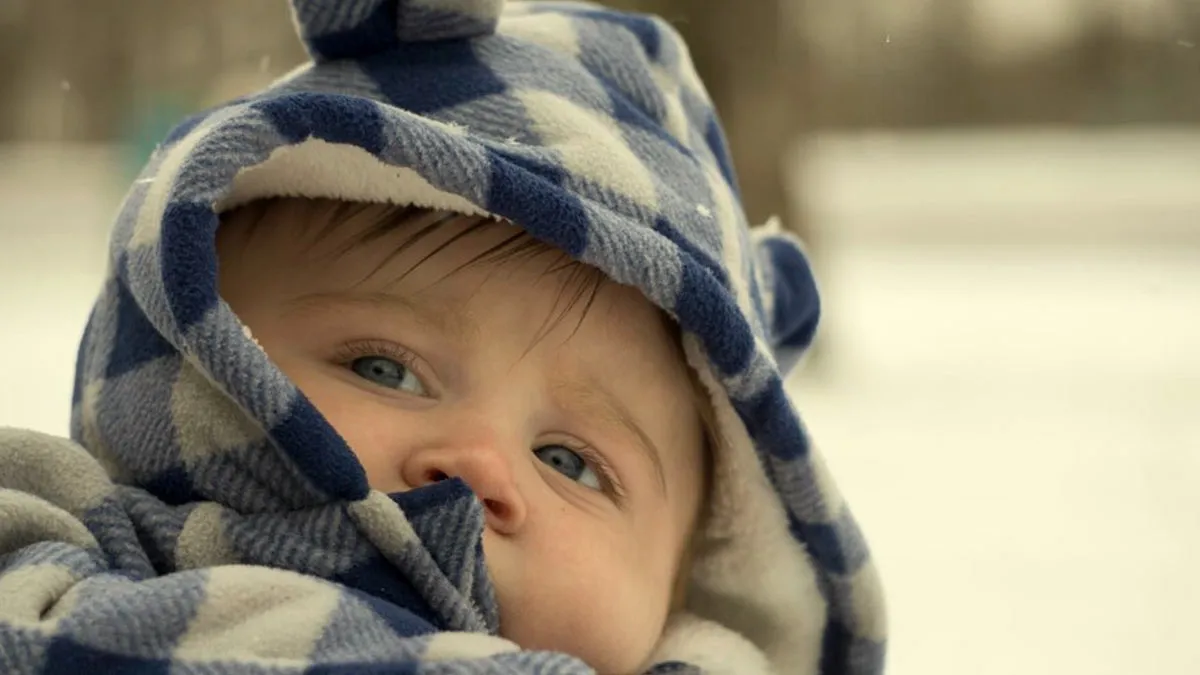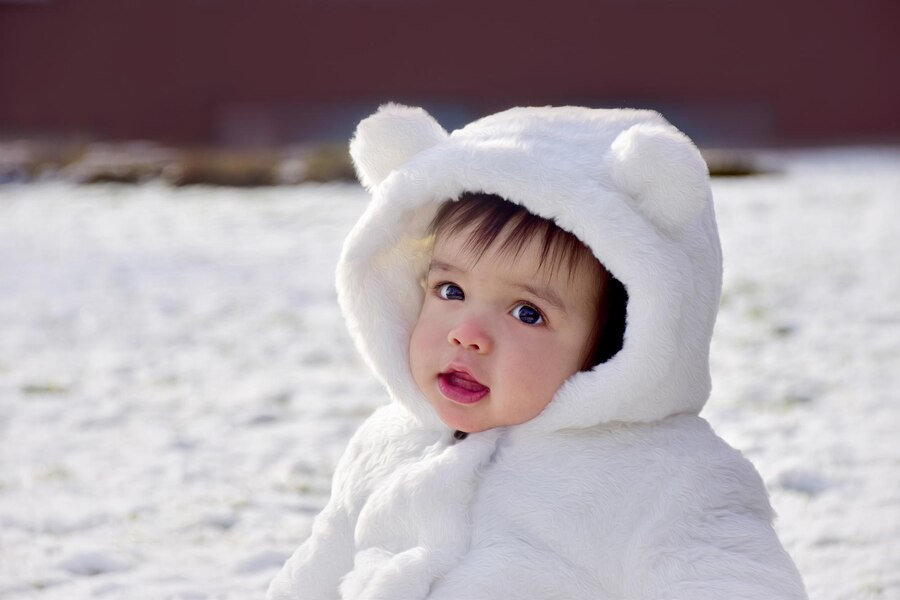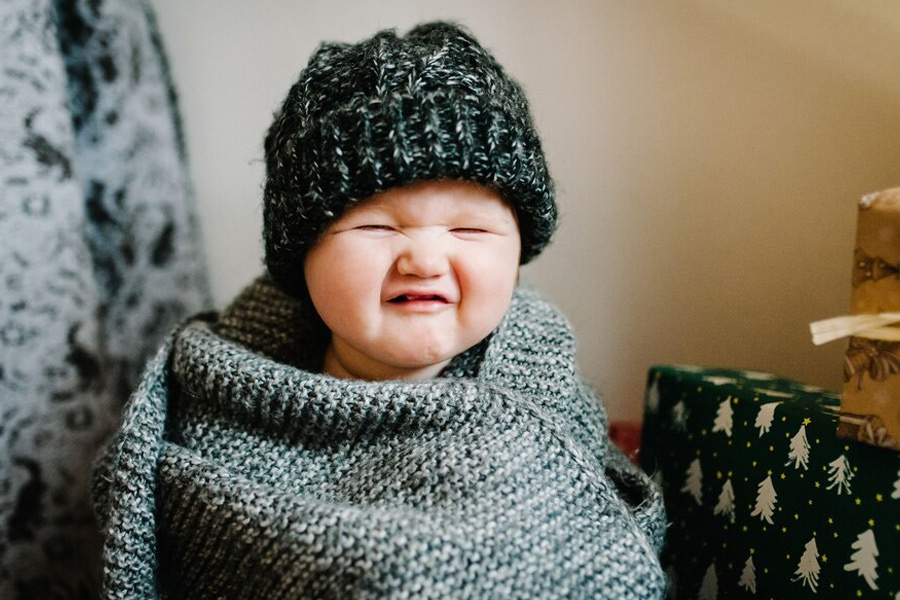
Are you worried about your baby being too hot or too cold this winter? As parents, it's natural to want to keep your little one warm, but it's also important to remember that overdressing can be just as concerning as not dressing them warmly enough. Since babies cannot regulate their body temperature as well as adults, it's essential to pay attention to the signs that indicate if they are too warm or too cold.
Table of Content:-
In a conversation with the OnlyMyHealth team, Dr. Suresh Gupta, Director of PICU and Paediatrics, Sir Ganga Ram Hospital, shared five simple signs that can help you figure out if your baby is overdressed or underdressed. By keeping an eye on these, you can make sure your baby stays cosy and safe throughout the winter.
RELATED: Worried About Your Newborn’s Nutrition? Here Are The Surprising Benefits Of Millet
1. Check The Nape Of The Neck

Dr. Suresh Gupta explains that the nape of your baby's neck is one of the most reliable indicators of their body temperature. "If the back of the neck is sweaty, your baby is too warm," he advises. On the contrary, if it feels cold to the touch, it's a sign that your baby may need an extra layer. The neck provides a more accurate temperature reading than their hands or feet, which naturally tend to feel cooler.
2. Observe Your Baby's Skin Colour And Temperature
Another way to know whether your baby is overdressed or underdressed is by looking at their skin colour and temperature. Dr. Gupta notes, "Flushed red cheeks and chest can indicate that your baby is overheating." On the other hand, if your baby's skin appears pale or blotchy, it may suggest they are too cold. Ideally, your baby's skin should feel warm and pink, but not too hot or cold.
3. Watch For Changes In Your Baby's Behaviour
Your baby's behaviour can give you important clues about their comfort level. Dr. Gupta explains that an overheated baby may become irritable or restless. "If your baby is unusually quiet or lethargic, they could be too warm," he says. Additionally, fast breathing or difficulty sleeping might signal overheating. Similarly, if your baby is sluggish or has trouble waking up, it might mean they’re feeling too cold.
4. Monitor Your Baby’s Extremities
While hands and feet aren’t the best temperature indicators, they can still offer clues about your baby’s warmth. Dr. Gupta advises, "While their hands and feet should not be icy cold, they shouldn’t be overly warm either." You can check their ears, nose, and fingertips as a guide, these areas should feel slightly cool but not cold to the touch.
5. Check For Sweating Or Moisture
Excessive sweating or moisture is another sign that your baby may be overheating. "Damp hair around the hairline or moisture on the chest or sweaty back indicate your baby is too warm," Dr. Gupta points out. If you notice these signs, you might want to remove a layer of clothing to help them cool down.
How Much Clothing is Enough?

When it comes to dressing your baby for winter, Dr. Gupta shares this simple rule, "Dress your baby in one extra layer than what you are comfortable wearing." This ensures they stay warm, but not too warm. A good guideline is to add a layer of clothing, such as a light sweater or blanket, over their regular outfit.
It’s also important to remember that dressing your baby in several thin layers is preferable to one thick layer. "This approach allows you to adjust their clothing more easily as needed," Dr. Gupta explains. For instance, if you're heading indoors to a heated space, it may be necessary to remove a layer or two to prevent your baby from overheating.
How To Know If You Should Get Your Baby Checked By A Doctor?
There are certain warning signs that may indicate your baby needs immediate medical attention. Dr. Gupta emphasises that if your baby is extremely lethargic, unresponsive, or has difficulty breathing, you should seek help immediately. Other signs to watch for include a fever above 38°C, or hands and feet that are unusually cold and turning blue. These could be signs of serious illness, and prompt action is crucial.
RELATED: What’s Best For Your Baby: Breastfeeding Or Formula Feeding?
Bottomline
Finding the right balance can be tricky for new parents, but by paying attention to simple signs like the temperature of the nape of their neck, their skin colour, or their behaviour, you can easily tell if they’re too warm or too cold. Dressing your baby in layers allows you to adjust their clothing as needed, especially when moving between indoors and outdoors.
If you notice any worrying signs, like unusual lethargy, difficulty breathing, or cold extremities, it's important to seek medical help right away. Staying aware and responsive to these cues will ensure your baby stays comfortable and cosy through the colder months.
Also watch this video
How we keep this article up to date:
We work with experts and keep a close eye on the latest in health and wellness. Whenever there is a new research or helpful information, we update our articles with accurate and useful advice.
Current Version